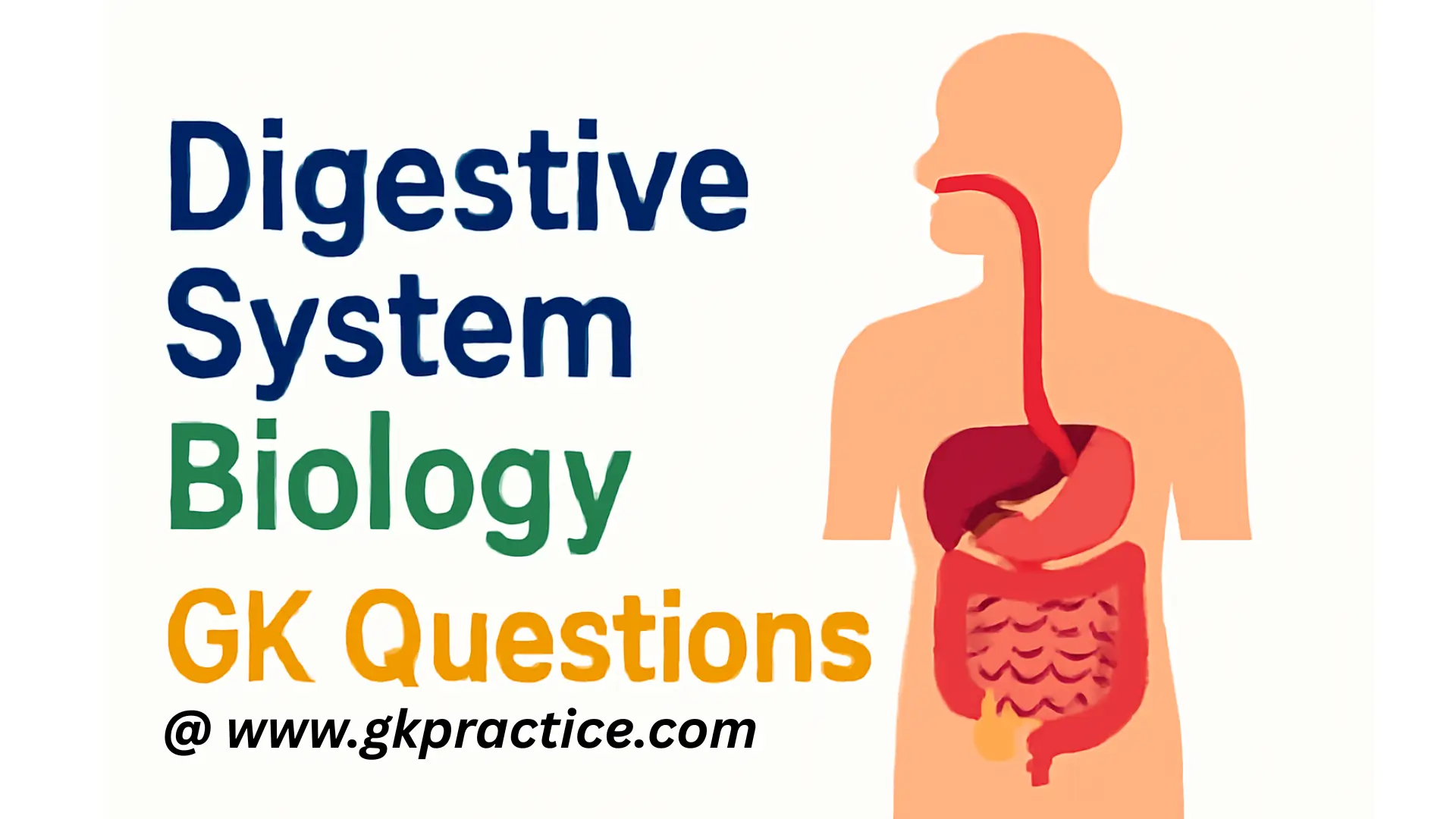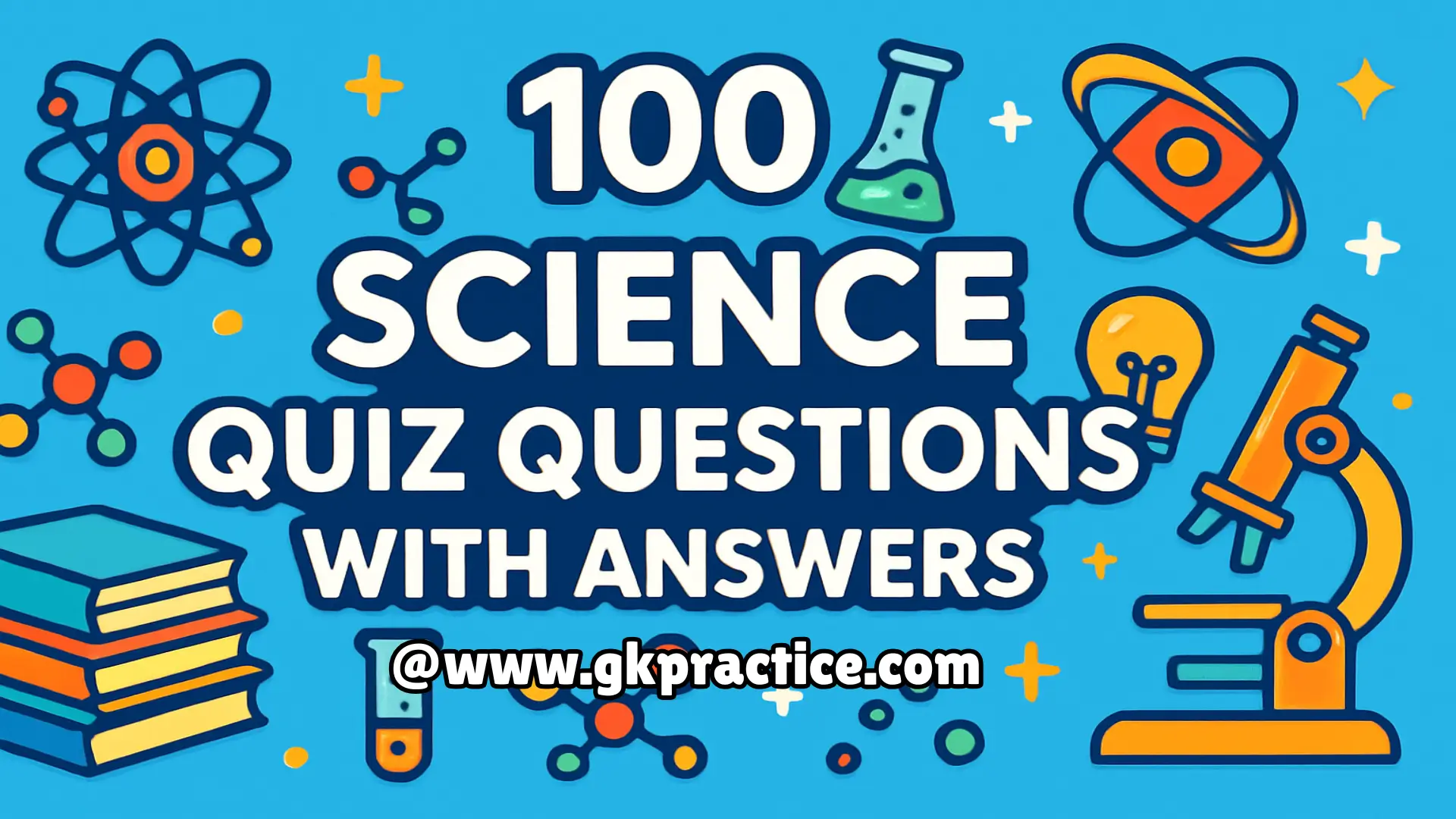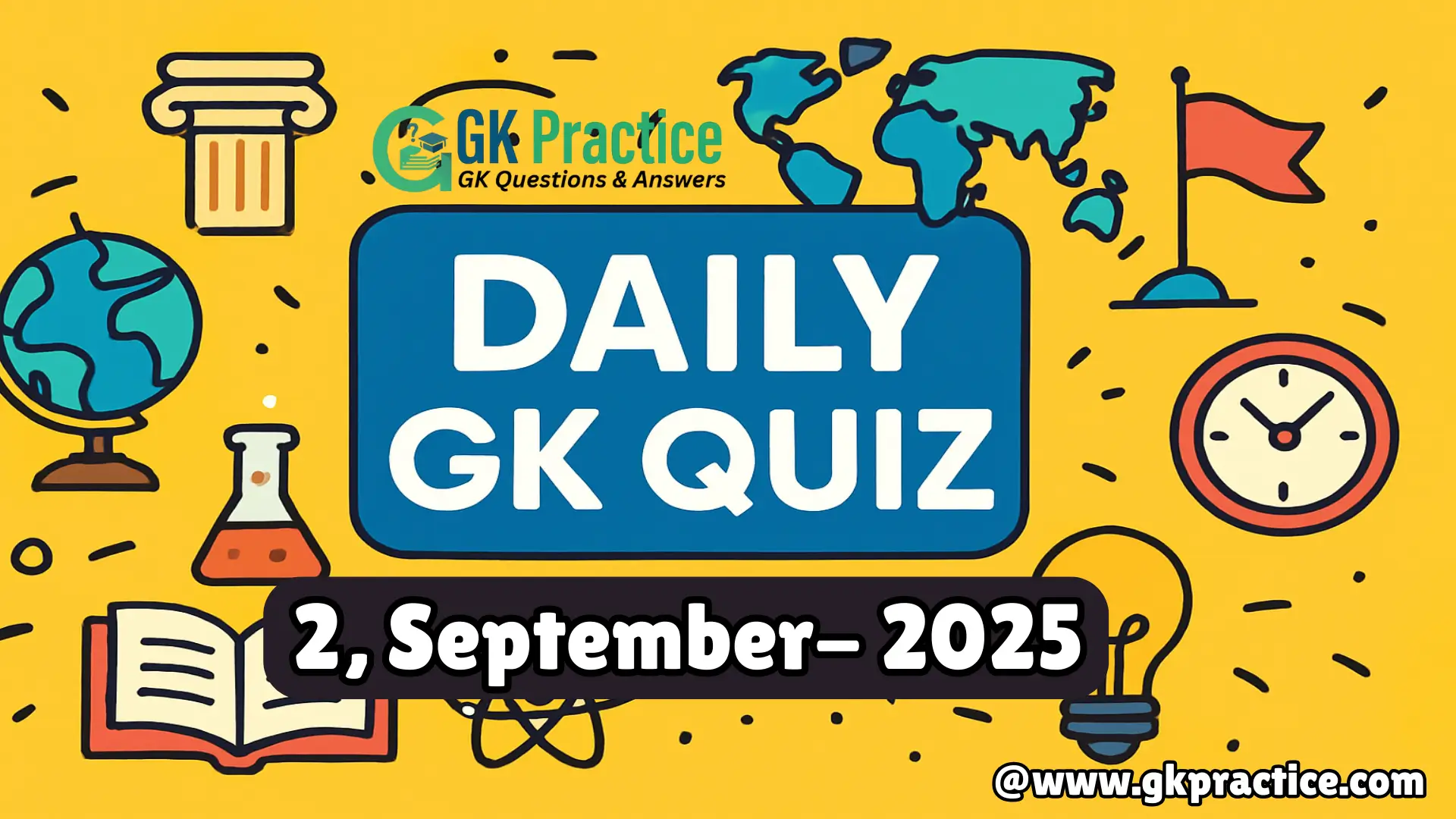Explore the most important Digestive System Biology GK Questions and Answers for SSC, Railway, Defence, Banking, and other competitive exams. Practice quiz-based questions on digestive organs, enzymes, and processes with correct answers and explanations.
Top Digestive System Biology GK Questions for Exams:-
Q1. Which organ is primarily responsible for the digestion of proteins?
a) Stomach
b) Liver
c) Large Intestine
d) Pancreas
Explanation: The stomach plays a vital role in protein digestion through the secretion of gastric juice containing hydrochloric acid and pepsin enzyme. Hydrochloric acid creates an acidic environment, while pepsin breaks down proteins into smaller peptides for further digestion in the small intestine.
Q2. Which enzyme in saliva helps in the breakdown of starch?
a) Amylase
b) Lipase
c) Maltase
d) Trypsin
Explanation: Salivary amylase, also called ptyalin, initiates carbohydrate digestion in the mouth by breaking starch into maltose and dextrins. This is the first step of digestion before food reaches the stomach, highlighting the importance of saliva in preparing food for later enzymatic processes.
Q3. Which part of the small intestine is mainly responsible for nutrient absorption?
a) Duodenum
b) Jejunum
c) Ileum
d) Caecum
Explanation: The jejunum, the middle part of the small intestine, is highly specialized for nutrient absorption due to its villi and microvilli, which increase the surface area. Most of the carbohydrates, proteins, and vitamins are absorbed here, while the ileum absorbs bile salts and vitamin B12.
Q4. Which accessory digestive organ produces bile?
a) Liver
b) Gallbladder
c) Pancreas
d) Spleen
Explanation: The liver produces bile, a greenish fluid that helps in emulsifying fats into smaller droplets, making it easier for lipase enzymes to act. The gallbladder stores bile, but production happens in the liver, making it essential for fat digestion and absorption in the small intestine.
Q5. Which organ is considered the longest part of the digestive system?
a) Large Intestine
b) Small Intestine
c) Stomach
d) Esophagus
Explanation: The small intestine, approximately 6–7 meters long in humans, is the longest part of the digestive system. It plays a critical role in digestion and nutrient absorption. It consists of three regions: duodenum, jejunum, and ileum, each performing specific roles in food breakdown and absorption.
Q6. Which part of the digestive system absorbs most of the water?
a) Stomach
b) Small Intestine
c) Large Intestine
d) Pancreas
Explanation: The large intestine absorbs most of the water and electrolytes from the undigested food material, converting it into solid feces. This process is crucial to prevent dehydration. The large intestine also hosts beneficial bacteria that assist in producing vitamins like vitamin K and biotin.
Q7. What is the primary function of the pancreas in digestion?
a) Storing bile
b) Secreting digestive enzymes
c) Absorbing nutrients
d) Neutralizing acids
Explanation: The pancreas produces digestive enzymes like amylase, lipase, and trypsin, which break down carbohydrates, fats, and proteins. It also secretes bicarbonate ions that neutralize stomach acid in the duodenum, providing a suitable environment for enzyme activity and efficient nutrient digestion and absorption.
Q8. Which vitamin is absorbed in the ileum with the help of intrinsic factor?
a) Vitamin A
b) Vitamin B12
c) Vitamin C
d) Vitamin D
Explanation: Vitamin B12 is absorbed in the ileum with the help of intrinsic factor, a protein secreted by the stomach’s parietal cells. This absorption process is vital for red blood cell formation and nervous system health. Deficiency may cause pernicious anemia and neurological issues.
Q9. Where does most chemical digestion of food occur?
a) Stomach
b) Small Intestine
c) Large Intestine
d) Mouth
Explanation: Most chemical digestion takes place in the small intestine, especially in the duodenum. Enzymes from the pancreas and bile from the liver break down carbohydrates, proteins, and fats. This is where food is converted into absorbable nutrients, which are then absorbed by the intestinal villi.
Q10. Which sphincter regulates the passage of food from the stomach to the small intestine?
a) Cardiac Sphincter
b) Pyloric Sphincter
c) Ileocecal Valve
d) Anal Sphincter
Explanation: The pyloric sphincter is a muscular valve that controls the release of partially digested food (chyme) from the stomach into the duodenum. It ensures that food passes gradually, allowing time for digestive enzymes to act efficiently in the small intestine, preventing overloading of the system.







